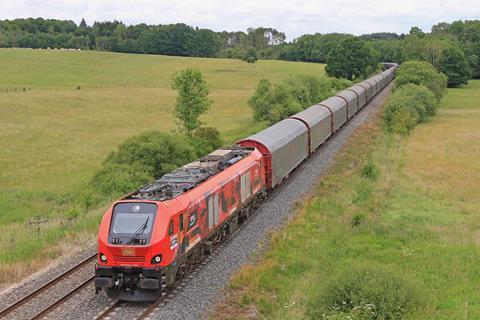
EUROPE: European Commission proposals to revise the Weights & Dimensions Directive covering lorries could have ‘disastrous consequences’ for the rail sector, according to industry associations CER, ERFA, UIC, UIP and UIRR.
The Commission has proposed allowing zero-emission lorries and lorries carrying freight which is moved using two or more transport modes to be heavier than their fossil fuel counterparts.
The associations commissioned consultancy D-fine to investigate the potential impact of the proposed change. The study predicts that it could lead to a reverse modal shift of up to 21% for all rail segments and 16% for combined transport.
This could result in up to 10·5 million additional lorry journeys per year, emitting up to 6·6 million tonnes of additional CO2, accruing additional external costs of up to €2·2bn and increasing road infrastructure costs by more than €1·15bn/year.
The rail associations suggest that the 40 tonne gross vehicle weight limit should be retained for lorries crossing between EU member states. Exceptions should only be permitted for the road legs of intermodal cross-border operations. Only zero-emission vehicles should be allowed an additional gross weight, and even then only for as long as the energy density of the batteries requires it.
Meanwhile, standard dimensions should be maintained for all types of loading units in order to ensure continued compatibility with different transport modes. The associations believe that external costs must also be taken into account, which would favour modes such as rail which offer significant advantages in this respect.
ERFA Secretary General Conor Feighan said ‘the impact of this proposal will be felt by all types of rail freight transportation, not just single wagon transport’.
UIC Director General François Davenne said ’from a silo perspective, these proposed amendments look to be a good contribution to greening the freight market in Europe. In reality, the legislative proposal seriously jeopardises any attempt to create a truly interoperable supply chain. This is the case within the rail sector and between different modes of transport.
‘It looks likes longer and heavier trucks are still technically compatible with combined rail-road transport. In practice a significant portion of the current combined transport market will be negatively impacted.’

















